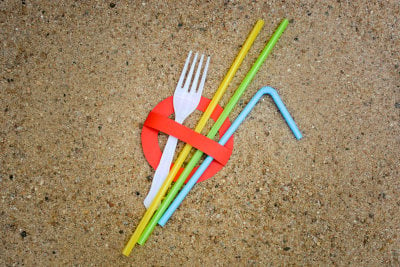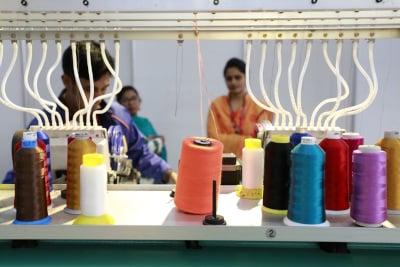Best in Manufacturing – July 20, 2021
Each Tuesday, we publish a list of top articles and other content related to manufacturing in areas like quality control, product development, supply chain management, sourcing, auditing and law.
1. EU's Latest Ban on Plastic Comes into Effect
 Since its first invention, plastic has soon become a popular material among many industries and is now the leading material to produce finished goods. But, since the polymers used to make the plastic are not renewable, plastic is an unsustainable material and can cause a long-term effect on our environment.
Since its first invention, plastic has soon become a popular material among many industries and is now the leading material to produce finished goods. But, since the polymers used to make the plastic are not renewable, plastic is an unsustainable material and can cause a long-term effect on our environment.
With the rising awareness of environmental protection, countries and regions are pushing their manufacturing sectors to reduce their reliance on plastic materials. For instance, the European Union’s ban on single-use plastic officially entered into force on July 3rd.
According to the ban, 10 single-use plastic (SUP) including straws, plates, cutlery, and cotton bud sticks are not allowed to enter the EU market anymore. Also, the ban is requiring drinking bottles to contain more recycled plastic to reduce the use of virgin plastic.
Frédérique Mongodin from an NGO called Seas At Risk said some coercive measures are necessary:
Single-use plastic is the symbol of today's throw-away society and phasing them out constitutes an obvious first step to fight plastic pollution. Yet we cannot rely on the sole political will of national governments.
However, the ban is not applied to “single-use plastic products used in the health sectors”. Disposables used such as single-use gloves, gowns, and masks are still allowed.
More requirements on the member states and products
Aside from banning single-use plastic, the Single-Use Plastic Directive (SUPD) is imposing more requirements on its member states and plastic products. Some of the main requirements include:
- Reduce consumption obligation: despite the banned plastic products, there are still some plastic products available on the market. The EU requires its member states to reduce the use of that plastic as well. The EU suggests providing replacements or inhibiting the marketing actions on those products.
- Set minimum standards for recycled content: the member states shall set a minimum standard on the recycled plastic used. For example, a three-liter beverage container must be made of at least 25 percent recycled plastic by 2025 and 30 percent by 2030.
- Message on the marking and labeling: some SUPD listed products should carry a mark or label that indicates the impact of single-use plastic and the guide to discard properly.
- Extended manufacturer responsibility: the EU member states should extend their responsibility to the manufacturers of single-use plastic products. The manufacturers are required to carry the cost of collecting, transporting, and processing the waste that they generated
Why will the ban affect the manufacturing sector?
Although the ban is good news for the environment, it aroused some concerns in the manufacturing sector.
For some manufacturers, the EU’s definition of plastic is unclear and leaves potential loopholes. Though the EU can add long text to extend the coverage of the definition, it won’t be the final solution to the problem. Aaron Kent, the founder of Hong Kong reusables company called Please Drink Responsibly, explained the reason:
They have tried to define plastics in a legal sense, i.e. what exact properties make a material a plastic. But in trying to write that down, their definitions accidentally capture materials that they want to promote.
Also, some manufacturers are concerning that some countries might set more ambitious rules on reducing plastic. If one country is requiring 30 percent of recycled content in plastic while the other country is requiring 40 percent, this will cause a big problem for manufacturers producing the same product and selling within the bloc.
Regarding this concern, a spokesperson of the Commission said they will keep monitoring the process and “provide member states with guidance and assistance where needed". The spokesperson didn’t specify if the Commission will align the rules within the countries or not.
Follow the link below to learn more about the EU’s latest ban on single-use plastic.
EU plastic rules worry manufacturers, environmentalists demand more – Catarina Demony, Reuters
2. Chinese market's domestic demand continues to grow
Due to the raging COVID, brands  experienced a tough time retaining their existing clients. Some brands are exploring new markets home and abroad to survive. And the new exploration seems easier for Chinese brands.
experienced a tough time retaining their existing clients. Some brands are exploring new markets home and abroad to survive. And the new exploration seems easier for Chinese brands.
According to a “China Shopper Report” from Bain & Company and Kantar Worldpanel, Chinese brands can adapt to the local trends in this enormous market more quickly than the foreign players. The report said:
Chinese brands, aided by their strong local supply chain, reacted more quickly to shifting consumer sentiments and captured more volume growth by lowering [average selling price].
Moreover, the report reveals that consumers in smaller Chinese cities are more willing to shop than people living in big cities. That is because the consumers in smaller cities usually travel and are less affected by the COVID. The purchase volume in low-tier cities grows stable.
However, the report also finds out that Chinese consumers are now more being more price-sensitive than before. They are measuring more carefully whether the product is suitable for use.
The supply shortage is slowing down the manufacturing activities
However, in the past months, the shortage in the supply chain is slowing down the manufacturing activities in China. Due to the rising raw material cost and serious shortage in chips, China's factory activity dipped to a four-month low in June.
Aside from China, other manufacturing countries in Asia like South Korea and Japan were also deeply affected by the semiconductor shortage.
Plus, started in mid-May, some factories in China’s southern part are affected by the shortage of coal supply. The inadequate coal supply is causing a power shortage and affecting the capacity of the operations.
However, although there is a slowdown in factory activities, the Purchasing Manager's Index (PMI) is expected to rebound in July. Except for the increasing domestic demand and the foreign order, the containment of the latest COVID wave of COVID and the recovery of the Chinese Yantian port will be contributing to the rebound.
Chinese government to support its advanced manufacturing sector
While China is shifting its focus to boost its domestic demand, the Chinese government is also looking to update its existing manufacturing industry. In early July, six Chinese ministries jointly issued a guideline on further developing its advanced manufacturing sector.
According to the guide, this manufacturing country will develop 10,000 “little giant” enterprises in niche sectors, and 1,000 enterprises that specialize in specific industries. Wil the support of those enterprises, China will shift its strategic policy to the breakthroughs in specific & critical sectors and the supply chain.
Tian Yun, vice director of the Beijing Economic Operation Association, commented:
Making breakthroughs in chokehold sectors requires investment over a decade, and we may see some initial results in the next five years.
The guideline reveals that the domestic manufacturing industry will remain a key point in China’s blueprint. But the country will aim to develop advanced manufacturing with technology to lessen the gap between high-end manufacturing countries like Japan and Germany.
Follow the link below to learn more about China’s rising domestic demand.
China’s economy sees new pockets of growth in rising shopping trends – Evelyn Cheng, CNBC
3. Bangladesh's garment manufacturing industry recovers gradually
 Despite the remaining COVID situation, Bangladesh's garment manufacturing industry is showing signs of recovery. The country’s exports surged 15 percent to $38.76 billion in June, benefited from the rebound of Western orders.
Despite the remaining COVID situation, Bangladesh's garment manufacturing industry is showing signs of recovery. The country’s exports surged 15 percent to $38.76 billion in June, benefited from the rebound of Western orders.
The surge is mainly contributed by the overseas sales of knitwear products such as t-shirts and sweaters. The sales for this product type increased 21 percent comparing to a year before and significantly drove the demand. But the rate is still 7 percent lower than the pre-pandemic period.
One interesting finding is: not all types of garments are experiencing significant growth in demand. For example, sales of woven garments such as formal denim shirts and pants only increased by 3 percent. The reason might be people are working from home and have much fewer needs in formal outfits.
However, garment industry leaders in Bangladesh estimated that the increasing exports can be restricted by the rising shipping cost and raw material cost in near future.
Disney is “coming back” to Bangladesh
For the garment manufacturing industry of Bangladesh, there is another good news coming. Sources firmed that the Walt Disney Company has decided to reinstate its production in Bangladesh. It has been eight years since Disney left Bangladesh for its Rana Plaza Collapse in 2013.
The comeback is because of Bangladesh’s improvement in its factory safety. After the distressing accident, the western brands jointly set up a regulatory body called the Accord on Fire and Building Safety (the Accord) to monitor and improve the safety risks in this garment manufacturing hub.
Though the Accord expired in early 2020, a new monitoring body called the Readymade Sustainability Council (RSC) is now taking over this role to keep assuring the working conditions in Bangladesh.
Faruque Hassan, president of the Bangladesh Garment Manufacturers and Exporters Association (BGMEA), said the industry highly welcomes Disney’s sourcing in Bangladesh. The BGMEA said the country has made achievements in many areas in its release:
The country being the home of world’s most LEED green factories, having 144 LEED green factories certified by USGBC, of which 41 are platinum, earns the confidence of the global brands and consumers through its tireless efforts in past decade
Bangladesh’s capacity in bicycle manufacturing is developing
Aside from its pillar industry garment manufacturing industry, Bangladesh is also developing other manufacturing sectors to strengthen its capacity. For instance, Bangladesh’s bicycle manufacturing capacity is rising, and the country is now the third-largest bicycle exporter to the EU.
Since more and more people are turning from taking public transportation to riding bicycles due to the pandemic, Bangladesh sees rising demand for bicycles from the western market. A high official of Meghna Group, one of the largest Bangladeshi conglomerates, said:
One of our three factories has received export orders for more than 130,000 units in the last five months.
What’s more, the trend is expected to keep going up. According to market research, the global bicycle market size can reach $62 billion by 2024. And with a bicycle sale of around $18 billion a year, the EU is one of the biggest markets for bicycles.
In the future, the Bangladesh bicycle manufacturers will keep focusing on the EU market to increase their exports. Meanwhile, the manufacturers will also find ways to explore their domestic market.
Follow the link below to learn more about the recovery in the Bangladeshi garment manufacturing industry.
Bangladesh exports up 15% as global demand for garments rebounds – Ruma Paul, Reuters
We’re constantly scanning the web for top manufacturing stories and news. If you’d like to submit an article for consideration for our weekly Best in Manufacturing, send us a message and let us know







